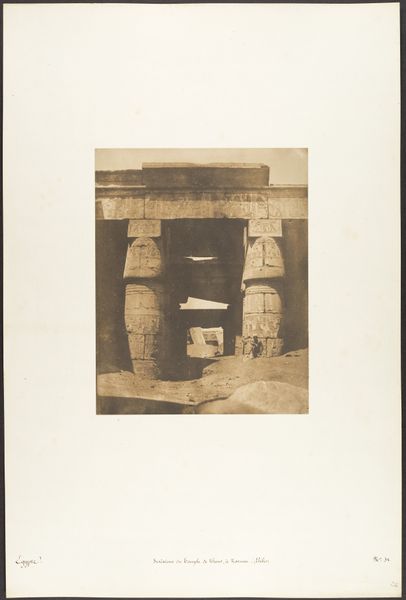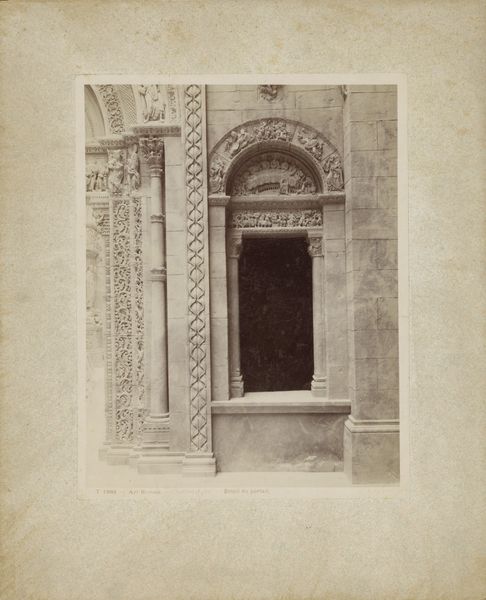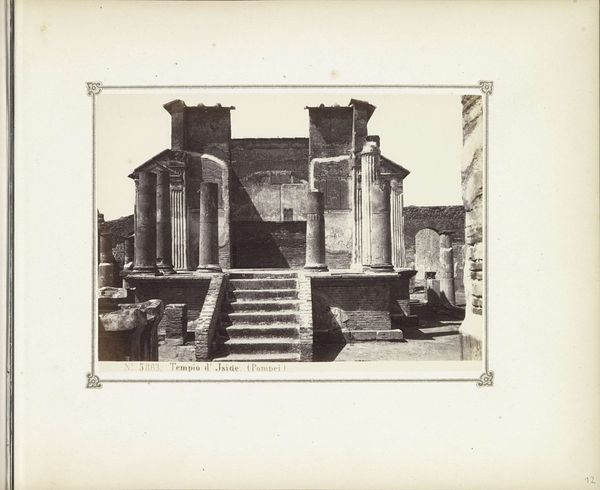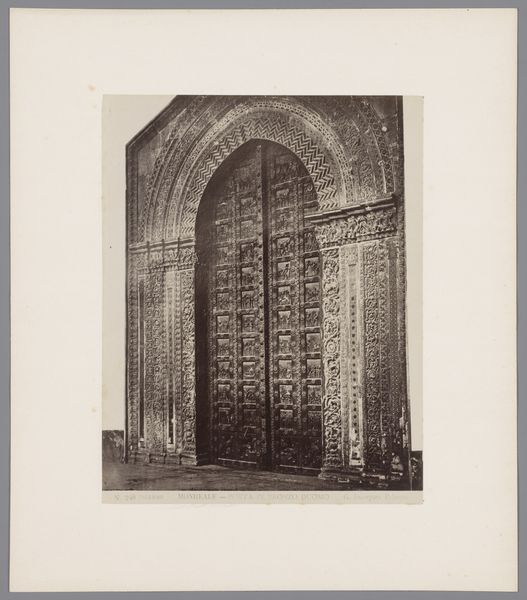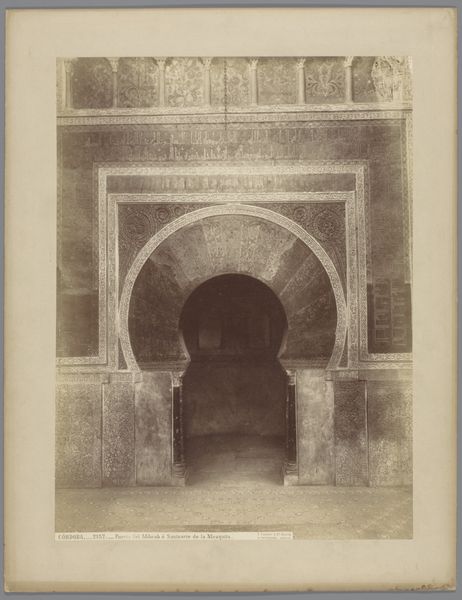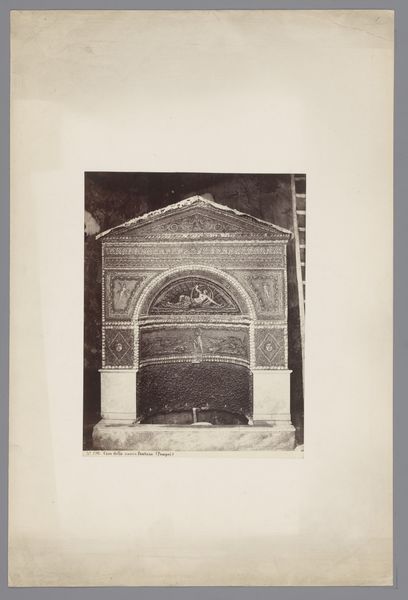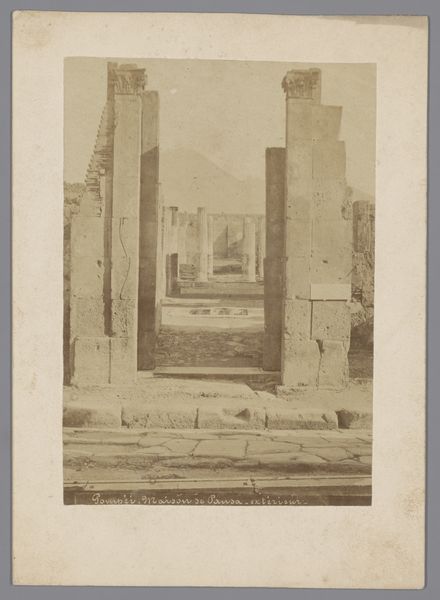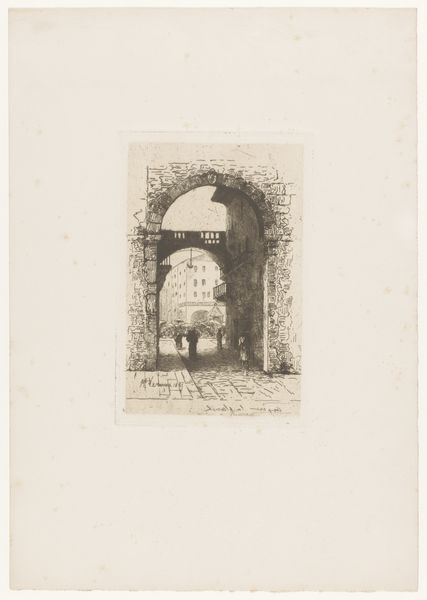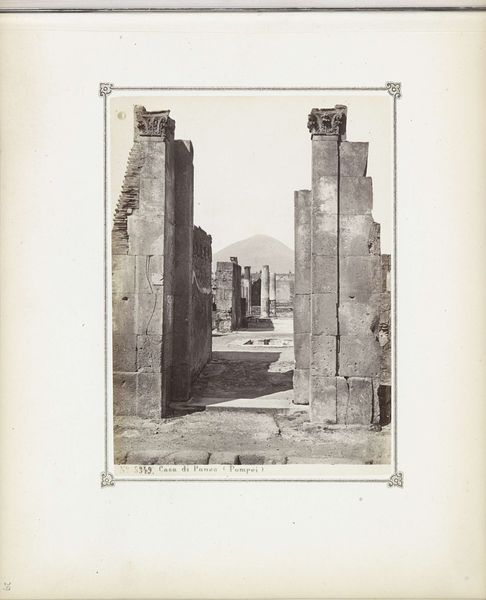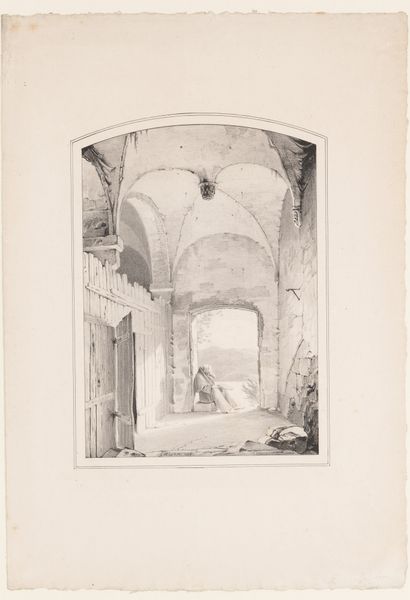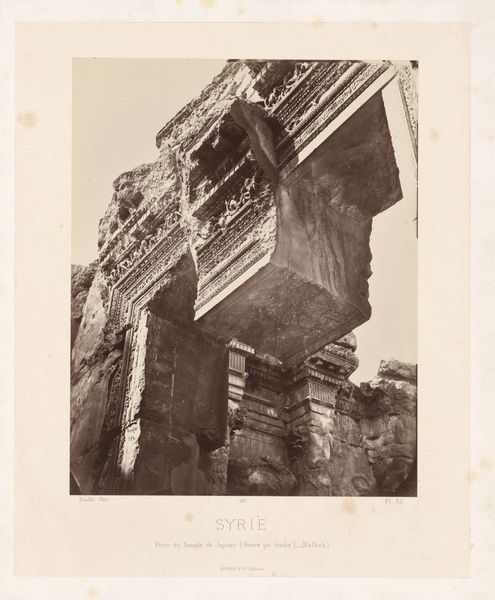
Entree van het Huis van de gewonde beer te Pompeï, Italië 1857 - 1914
0:00
0:00
giorgiosommer
Rijksmuseum
photography, site-specific, gelatin-silver-print
#
aged paper
#
toned paper
#
light pencil work
#
old engraving style
#
landscape
#
house
#
photography
#
ancient-mediterranean
#
site-specific
#
gelatin-silver-print
#
cityscape
Dimensions: height 405 mm, width 307 mm
Copyright: Rijks Museum: Open Domain
Editor: We're looking at "Entree van het Huis van de gewonde beer te Pompeï, Italië," a photograph by Giorgio Sommer, probably taken between 1857 and 1914. It's a gelatin silver print depicting an entryway in Pompeii. It gives me a sense of quiet desolation, almost like a stage set waiting for actors who will never arrive. What draws your eye when you look at it? Curator: It's the layers of time, isn't it? Sommer captures Pompeii, already frozen in its own past, and then time adds another layer to the photograph itself through the sepia tones. I find myself wondering what it felt like to stand there, to photograph this threshold. Almost like stepping into a dream. Does it whisper secrets to you, perhaps of the bear, wounded or otherwise? Editor: The bear… I hadn't really focused on the house's name. So, a bear motif must have been somewhere on the property, maybe a mosaic or a statue? Curator: Exactly! The names of houses in Pompeii often give clues to the owner’s profession or passions, sometimes referencing decorations in the house. Thinking about that bear, perhaps caught in a trap, connects us to the people who once lived within those walls, their vulnerabilities. It humanizes the archeological site. Do you find yourself imagining those former inhabitants? Editor: Absolutely. It moves from being simply an archaeological record into a story. A photograph within a story, documenting another story! The light and shadow really pull the viewer through that doorway. Curator: Yes, and Sommer knew that, he uses light so expressively. To think, people lived, loved, laughed, grieved, and even nursed wounded animals in spaces like these, gives this image a unique blend of grandeur and intimacy. Editor: I'm starting to see it less as a ruin and more as a portrait of a place brimming with life that just happens to be… elsewhere now. Curator: Precisely. It's about palimpsests of time and feeling; isn’t art amazing like that?
Comments
No comments
Be the first to comment and join the conversation on the ultimate creative platform.

